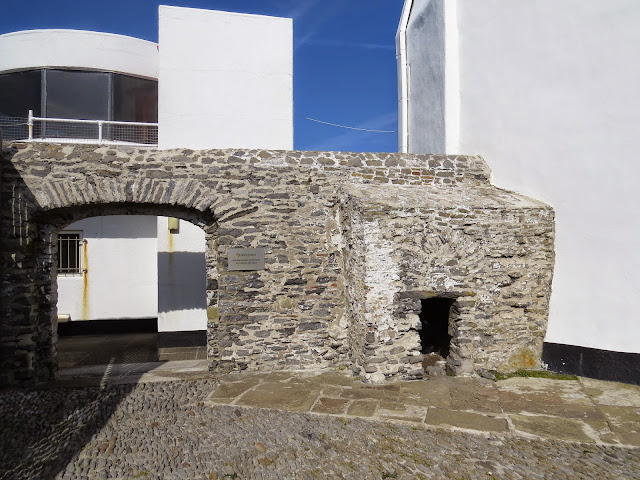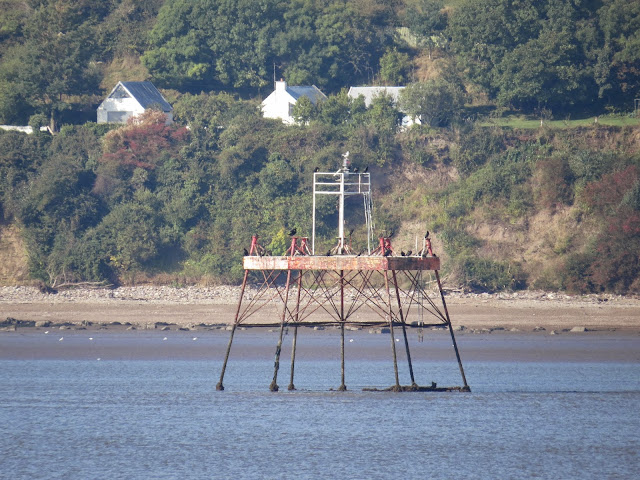One of my favourite spots on the coast is Dunmore East, lovely thatched cottages, a lovely cliff top park, nice beach with picnic area and on a sunny day it has views to die for. We were here back in 2008 , when I got close-up and personal with the lighthouses, so contented myself this time with views looking down at the harbour. One of my favourite Irish lighthouses (I do tend to say that about a lot of them!) this one has a rather unique design - in Ireland anyway. It was built in 1825 by the great Alexander Nimmo, a Scottish engineer who built numerous harbours and bridges, though, as far as we are certain, this is his only lighthouse. There is a school of thought that he says he was also responsible for building the beacons at Tramore Bay too, ( here ) but there is some dispute over this. I am told the lighthouse resembles a fluted Doric column. I'll go along with that. Note the new pierhead light and also Hook Head across the estuary in the background










